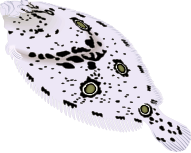CHRONOSOLEA
Research Directions:
Reproduction and physiology
Description:
 In this projects, we tried to determine the impact of the main environmental synchronizers (light and temperature) on larval development and their repercussions on the reproductive rhythms of Senegales sole (Solea senegalensis). For this, fertilized eggs of sole were exposed to different conditions of light and temperature, similar to the artificial ones used in hatcheries or to those the wild population is subjected to in the natural environment. The key factors to investigate were: (a) cyclical versus constant environment (LL / DD vs LD, and constant temperature vs. temperature cycles), and (b) wavelength of light (white vs blue, green or red). Previously, new techniques will be developed to study the behavior of the larvae based on the filming and analysis of the daily patterns of movement of the larvae.
In this projects, we tried to determine the impact of the main environmental synchronizers (light and temperature) on larval development and their repercussions on the reproductive rhythms of Senegales sole (Solea senegalensis). For this, fertilized eggs of sole were exposed to different conditions of light and temperature, similar to the artificial ones used in hatcheries or to those the wild population is subjected to in the natural environment. The key factors to investigate were: (a) cyclical versus constant environment (LL / DD vs LD, and constant temperature vs. temperature cycles), and (b) wavelength of light (white vs blue, green or red). Previously, new techniques will be developed to study the behavior of the larvae based on the filming and analysis of the daily patterns of movement of the larvae.
The primary objective of the first four tasks was to accurately determine which light and temperature conditions have the greatest effect on larvae, and what is the critical duration of exposure during larval development. The following tasks evaluated the effects on the establishment of expression patterns of GnRH, GnIH and GTHs in larvae and fry at the beginning of their sexual differentiation. The effect of thermo/photocycles on auxiliary culture (zooplankton) and larval feeding was also addressed, as well as the viability of a larval culture in mesocosms. Finally, the effect of the larval development conditions on the sexual determination of the fry was analyzed and finally its repercussion on the daily and seasonal reproduction rates in adults.
Knowledge of the functioning of the pineal-hypothalamic-pituitary-gonadal axis that regulates the reproduction rhythms of sole is essential to evaluate the incidence of environmental factors during larval development. At CRONOSOLEA we dedicated our research effort to studying new elements of the axis (GnIH and dopaminergic system), not addressed to date. We begun the research with a series of basic tasks of cloning and generating antibodies against GnIH and its receptors, necessary to address the location of GnIH cells in the brain and the development of an ELISA for GnIH. Subsequently, the effect of GnIH on other systems (melatoninergic, GnRH and GTH) was evaluated, as well as its impact on the rhythmic behavior patterns of the larvae. Attention was paid to the chrono-pharmacological effect of acute GnIH administration and the stimulation / inhibition it exerts "in vitro". Finally, tests were carried out to determine the “in vivo” effects of GnIH on the rhythms of seasonal reproduction and daily spawning.



